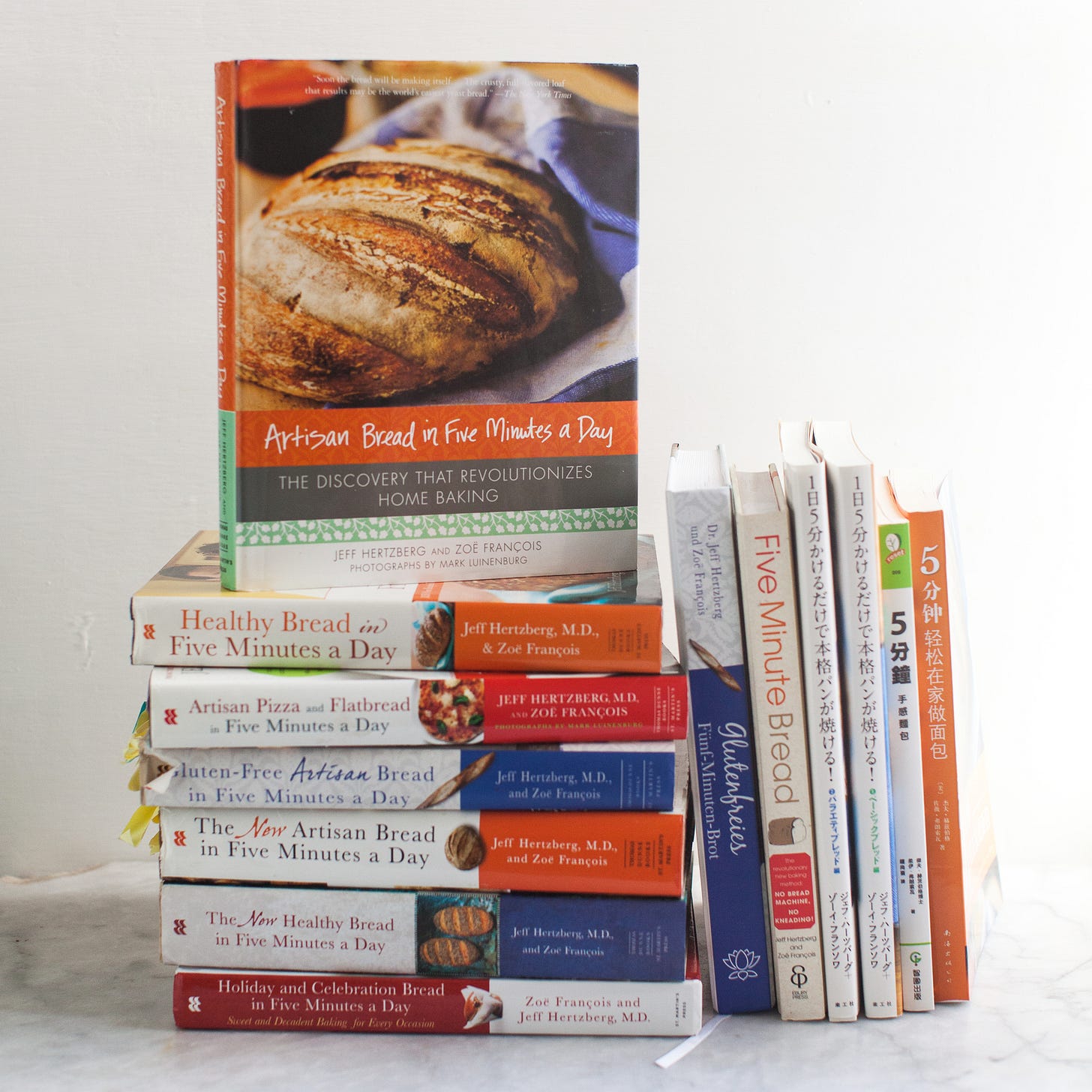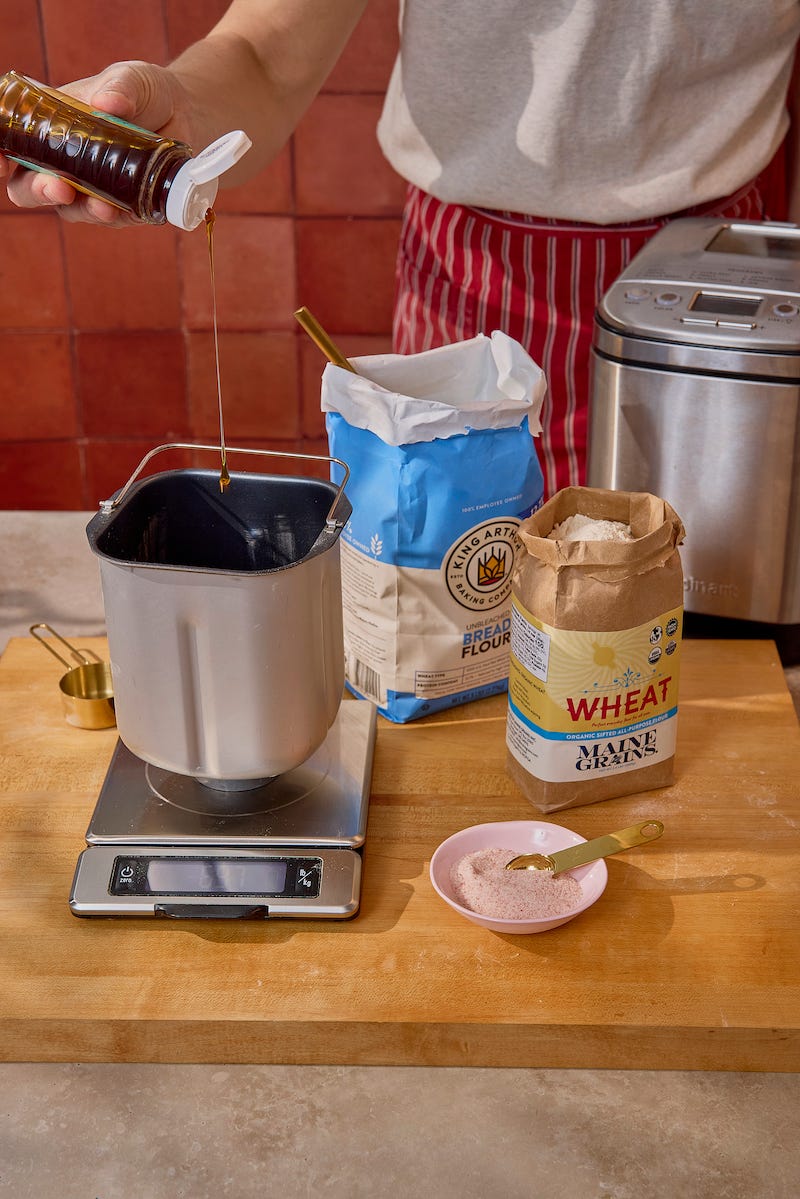In 2003, I met someone who would change the course of my life with a loaf of bread. Jeff and I met in a children’s music class. We were both there with our youngest children, and having already done all the Raffi songs with our eldest kids, we ended up chatting at the back of the room. I mentioned I was a pastry chef, and he told me about a super-fast, no-knead bread method he had developed. We became friends, and he asked me repeatedly to try his bread method. I didn’t want to try the bread and hurt his feelings. The technique (if you could call something so easy a technique) he described flew in the face of everything I’d learned in culinary school about the proper way to make bread, so I was super skeptical and came up with endless excuses. Jeff was very persistent, so I eventually relented. I tried it and, much to my shock and delight, it was unimaginably easy and incredibly tasty bread. I went back to music class the next week and insisted he write a book about it. He insisted we do it together, since he didn’t really like recipes! Haha! In 2005, we set off to write our first book, Artisan Bread in Five Minutes a Day. We ended up writing eight books together, which were translated into many languages, and they’ve sold over a million copies.
I’ve always maintained that our Breadin5 method is a great gateway into the craft of baking. It is simple and fast, and the results are terrific. I love it when people say they got over their fear of bread baking using our recipes, and now they’re willing to try more traditional, sometimes time-consuming methods, like sourdough bread. You have to understand that this was WAY before the pandemic and the explosion of bread baking at home.
If you are new to baking bread, try the Artisan Bread in Five Minutes a Day no-knead method and/or the Bread Machine Loaf (both recipes below). From there, you can move on to the Easy Dutch Oven Bread that requires a little more hands-on and time, but not much. Finally, making a sourdough starter and gorgeous bread is one of my favorite activities. Not an everyday loaf for me, but a project that brings me great joy and satisfaction. Having said all of that, you can start with whatever loaf you want, just remember to have fun and be patient!
This post contains affiliate links. If you make a purchase, I may make a small commission.
4 Ways to Make Homemade Bread
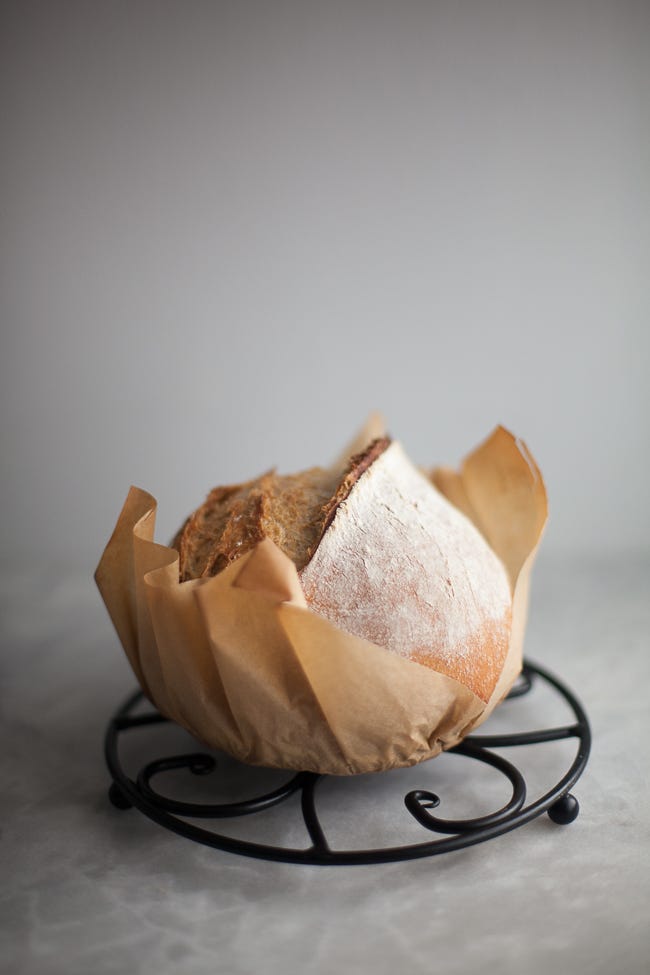
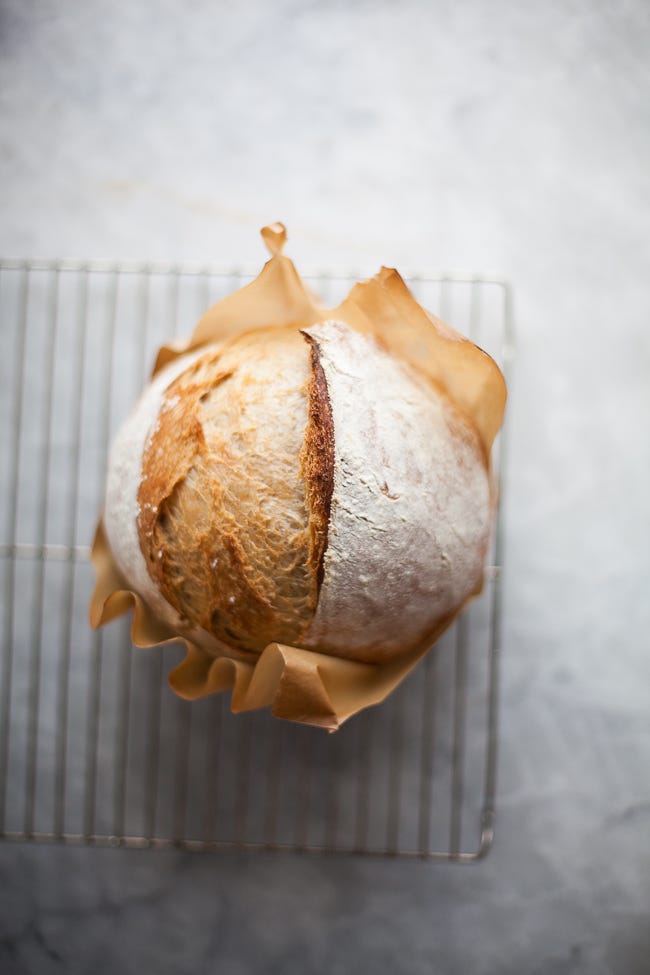
Method #1: Artisan Bread in 5 Minutes a Day
Many of you who found me through my TV show or on Instagram may not know that I am also the co-author of the Artisan Bread in Five Minutes a Day series. This is where I got my cookbook start, authoring eight books for the series. We’ve sold over one MILLION copies (that’s a lot of homemade bread being baked) and have been featured in The New York Times, The Associated Press, Food52, NPR’s The Splendid Table, on the Today Show, and many more. This method is incredibly easy and, truly, anyone can do it. Gold Medal Flour liked it so much that they featured it on their bags!
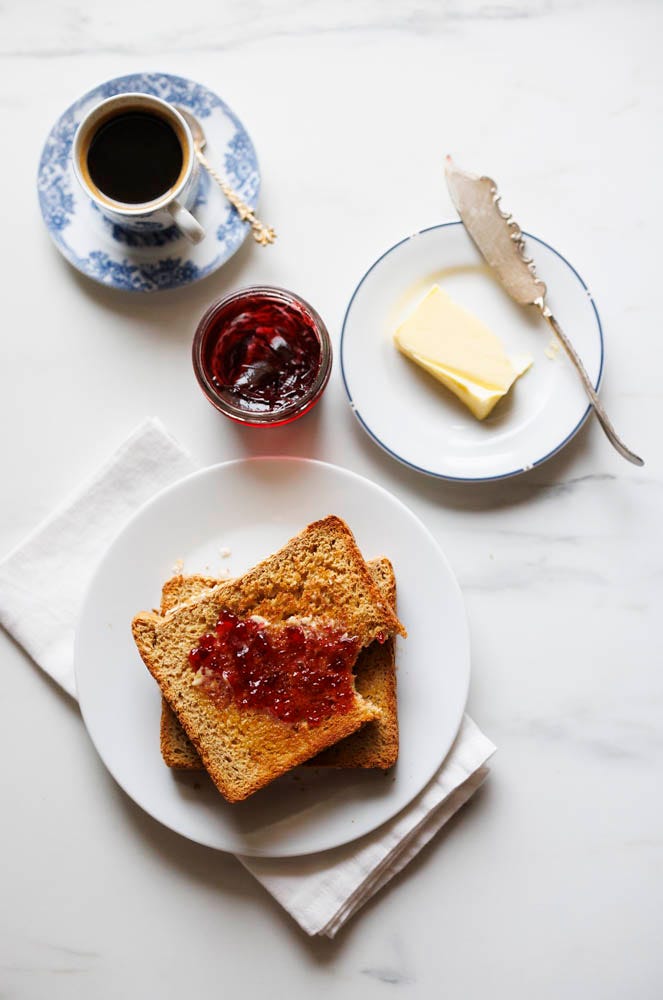
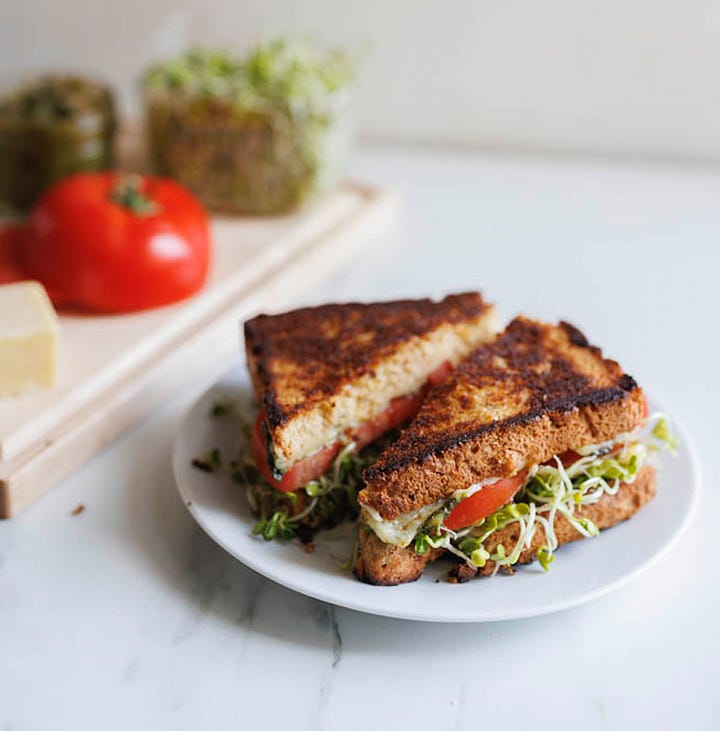
Method #2: Bread Machine
I have very recently, just last week, come to appreciate a bread machine. Lukas Volger sent me his latest book, The Bread Machine Book, and a cool Bread Machine to play with. I chuckled when it arrived because I have written eight books suggesting you don’t need a machine to bake easy bread. Mostly because I never loved the outcome, especially the soft crust in a bread machine. Well, bread machines today are WAY more sophisticated, and baking from Lukas’s book has converted me. I loved the bread! Watch my video below to see just how easy it is, and you too will want to try this loaf and more from his book. Not to mention, you can bake in the summer without heating up your oven—BONUS!
I got a chance to interview Lukas about his bread journey. You’ll find his responses below. Plus, he shared his Buttermilk Oat and wheat Loaf recipe with my Substack “Extras” subscribers! Thank you for supporting my work, and I just know you’re going to enjoy this recipe! If you don’t have a bread machine (you’ll probably want one after reading this), he includes instructions for how to bake the loaves in your oven, too.
GIVEAWAY for all subscribers: He’s also giving away THREE copies of his book. Simply leave a comment below or like this Substack post by April 29, 2025, at 11:59 p.m. for a chance to win. US addresses only.
Method #3: Easy Dutch Oven Bread
A shatteringly thin crust and a super light, stretchy interior is the kind of bread most beloved by my family. This crusty bread delivers on all of it. The simple ingredients, mixed with a short autolyze (just a fancy word for making a slurry of flour and water, then a quick rest), gives the bread the beautiful interior texture. Baking in a Dutch oven pretty much guarantees you’ll have a beautiful crust. In contrast to sourdough, you can get this loaf in less than four hours from mixing the dough to baking. That doesn’t include letting it rest until it’s room temperature. I know—it’s hard to wait!
Method #4: Sourdough
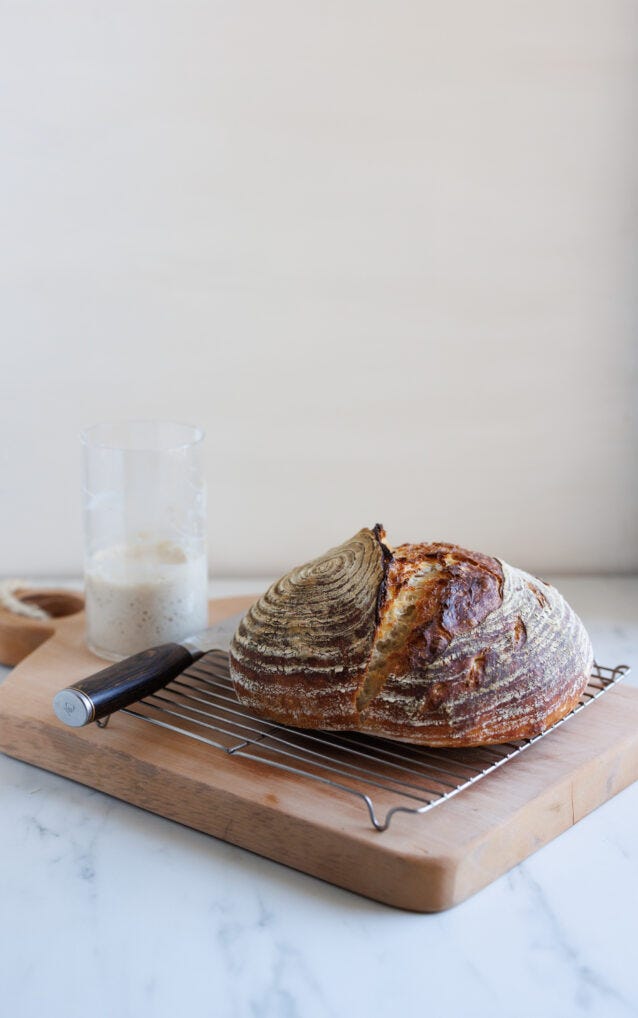
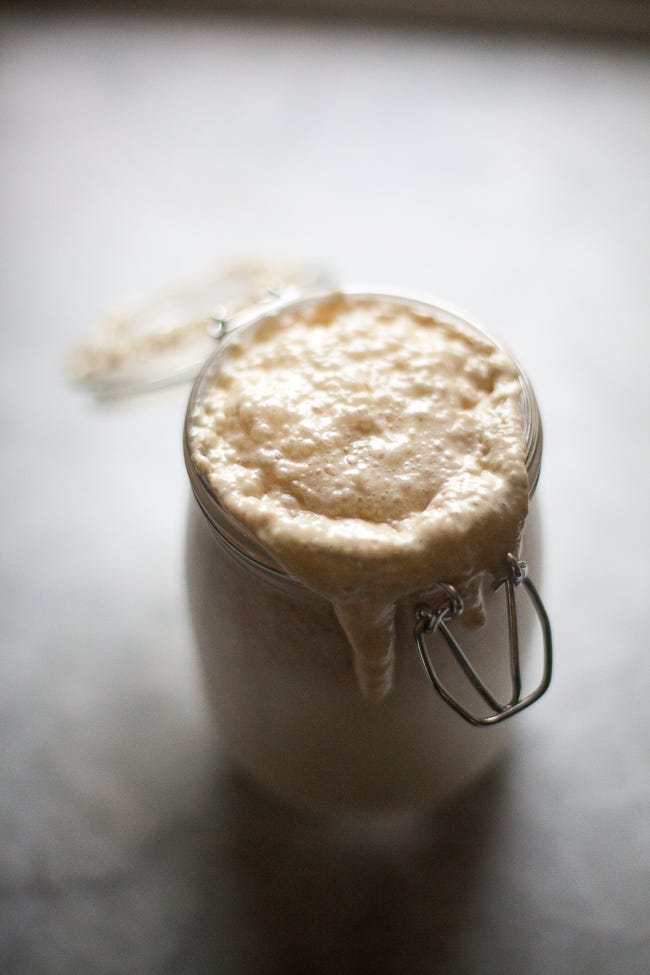
How To Make Sourdough Starter
Are you intimidated by making your own sourdough starter? I’m here to say: it’s easier than it seems! In fact, all that’s required is flour, water, and some patience. I have both a written and a video guide to sourdough starter to make the process simple. Watch the video below, or click the link to get the recipe, including tips, photos, troubleshooting, and more.
Sourdough Bread Recipe
Once you have the starter down, it’s time to make the bread! I have another guide, both video and written, for sourdough bread. Here, too, you’ll find the recipe, tips, troubleshooting, and step-by-step instructions.
Q&A: Lukas Volger, cookbook author, culinary content creator, recipe developer, and food stylist
Your cookbooks span a variety of subjects. What inspired you to write The Bread Machine Book?
I’m the first to admit that I never had a bread machine cookbook on my vision board. The bulk of my work over the past 15 years has been focused on easy, weeknight vegetarian recipes. But I’ve always taken on other freelance projects, and a few years ago, I had an assignment with Epicurious to review bread machines. Evidently they were having a comeback? (Spoiler: even though they were a fixture of the ‘90s, they never really went away!) I was skeptical at first, but I ended up thoroughly enjoying baking with them, and in the process I remembered how when I was a kid, it was my family’s bread machine that first unlocked the magic of baking for me. This ultimately led to my cookbook.
Through playing around with them, I’ve found that what I enjoy most about bread machines is their “Dough” program, by which you can just dump all your ingredients into the machine and press a button, and poof–you’ve got dough that’s gone through its bulk rise, ready to be shaped and baked in the home oven. There’s no flour that sputters anywhere, you don’t have to worry about the temperature of your kitchen, and besides peeking in once or twice as it mixes to assess the hydration, it is a set-it-and-forget-it operation. If you use a scale, there aren’t even any dishes to clean.
I often bake it like this, using my home oven, because it gives me a little more control of the shape, color of the crust, and evenness of the bake—which are the most common pain points of bread machine bread, regardless of what kind of machine you have. All the recipes in my book can of course be made start-to-finish in the machine, but I incorporated this “mild intervention” option into every recipe, just because of how much I enjoy it and how it really does streamline the project of making really delicious bread at home.
Tell us about your journey into food. What led you to where you are today as a food stylist, content creator, cookbook author, and recipe developer?
Growing up, my first job was at a bakery in Boise, Idaho, called Stone Mill Bread Company, which made the most incredible cinnamon-swirl bread (I included my recreation of it in my book). I was hired to work the counter and make sandwiches, but over time I got to spend more time back in the kitchen helping with the scones, cookies, and some of the bread. I passionately loved everything about this job—the sense of scale (garbage cans full of flour, plunging my whole arm into the bucket of sourdough starter to mix it up, and the giant, creaky rotating oven), the repetition that led to new discoveries every day, and even the cleaning-up ritual at the end of every shift, when we blasted “Free Bird” and tried to finish sweeping before the song ended.
When I moved to New York for college, I worked as a prep cook at a restaurant on the Upper East Side and loved that, too. But I just didn’t think I wanted to commit myself to the hours, pay, or working conditions (a fluorescent-lit basement that had a tendency to flood). So after getting my degree in literature, I found work in book publishing, and through those years I started blogging and discovering all the fun new food writing happening online.
Sometime around 2008 Matthew Lore of The Experiment Publishing, a friend and former colleague, asked me if I knew anyone who could write a book about veggie burgers. I thought I could do it so I drafted a proposal. Long story short, he signed me up to write it, and it sold reasonably well, and… that’s how I stumbled into all this! It’s pretty crazy. Food styling, content creation, and various odd jobs are all part of making a living, but recipe development and cookbook writing are what I love most.
Tell us about your Substack, Family Friend. What can people expect to find there?
I started my Substack a few years ago as a way to give some cadence to my online writing. I publish a new recipe every week, and focus primarily on weeknight-friendly vegetarian recipes (mostly with protein in mind), but I also throw the occasional baked good in there. I also love to feature authors and experts I love, such as Brian Levy and Hetty McKinnon, and focus on topical stuff like Minimal Mess Dinner Parties or High-Protein Veggie Bowls, too.
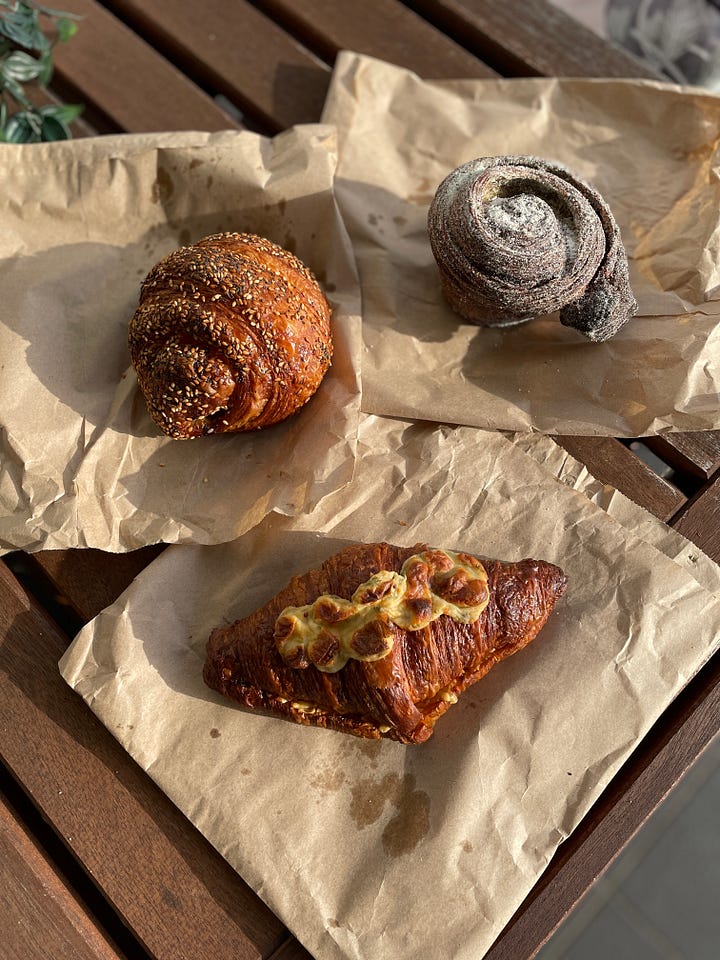

Do you have a favorite bakery? It can be anywhere in the world!
Oh, it is very difficult for me to choose just one. I love bakeries so much—they’re always such a labor of love and add so much to a neighborhood. I have immense gratitude to every baker who takes it upon themselves to open one up! My favorite bakery is often the one that’s close to where I live. Here in Greenpoint, Brooklyn, one of my favorites is Bakeri. I love their sourdough rye boules and their focaccia, and especially their cinnamon rolls. But also the cinnamon rolls at Hani’s in New York City don’t disappoint. In Sydney (where my husband is from), I’m so delighted by the climate-sensitive pastries of Christopher Thé at Hearthé, using local and native ingredients, and every bread I’ve had from Goodwood Bakeshop has been spectacular. Last year I had the most incredible, not-too-sweet Dutch Apple Pie at Winkel 43 in Amsterdam, which I’m trying to recreate at home. I could go on. Traveling with me is always fun because my priority is making a tour of treats.
Exclusive Recipe: Buttermilk Oat & Wheat Loaf
From Lukas: A relatively small amount of buttermilk adds not just tang to breads, but it makes them a bit more tender and aerated, its acidity breaking down the proteins in flour to produce a moist and craggy crumb. This loaf is a favorite for butter and jam. Use instant (or quick-cooking) oats if possible, because they’ll blend more seamlessly into the dough; if you opt for thicker-cut oats, go by weight; you’ll need about 10% less of the volume.




